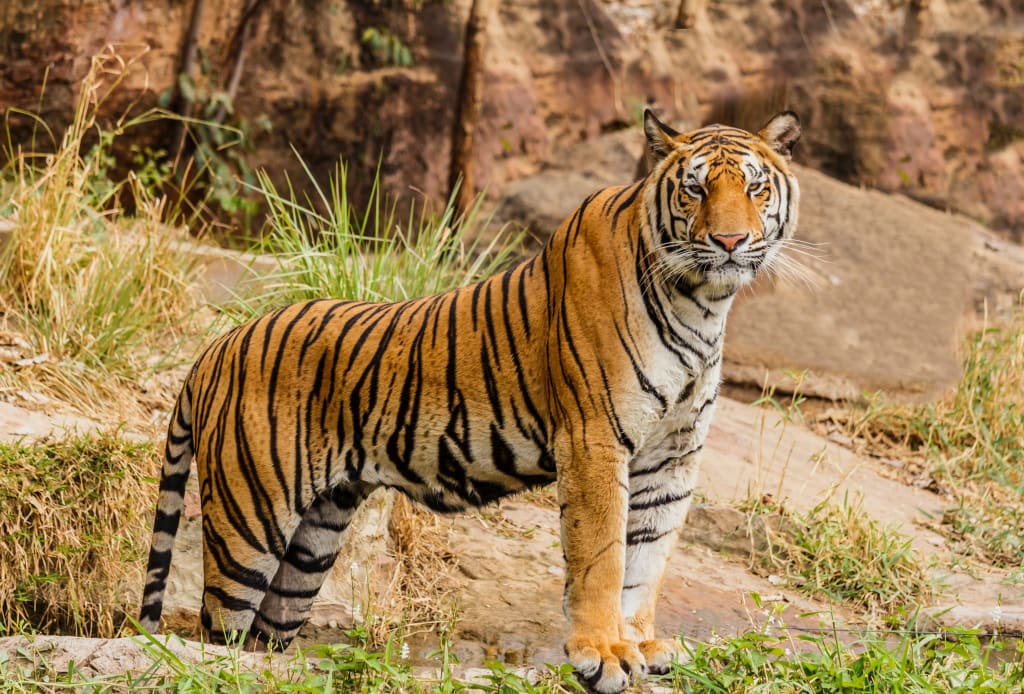What conditions must be met in a tiger's habitat? What does a tiger look like to its prey?
Habitat for tigers

These days, the arrested northeastern tiger "Wandashan 1" is in isolation, when it is released back into the wild and also touched the hearts of the majority of netizens. In an interview with CCTV News, Beijing Forestry University Associate Professor of Zoology Bao Weidong said that with the follow-up work to further improve, it is possible that the "Wandashan 1" will be released into the wild in advance, and as far as possible to let it return to its birthplace.
The best place for this northeastern tiger is to return to nature. We need to understand that as a big cat with very strict habitat requirements, a tiger cannot just find an uninhabited and undisturbed area and live happily in it. An ideal habitat must meet at least three major needs of tigers.
A. Vegetation for hiding
Throughout Asia, wild tigers live in areas with rich vegetation, such as the Malay tiger in tropical rainforests, the Bengal tiger in mangroves, and the Northeast tiger in cold temperate coniferous forests. ...... For tigers, the most important role of vegetation is to facilitate concealment. When sunlight reaches the forest floor through the tree canopy, it produces dappled light and shadows, just like the light and dark stripes on the tiger's body. Thus, the stripes on the tiger's fur help the tiger blend in with the forest.
In addition, hoofed animals such as deer cannot process various colors as human eyes do, and to them, a tiger's fur is not bright orange, but green. This is why sometimes tigers are "blind" to their prey when they hide in the bushes just three or four meters away from them. When a tiger comes to an open area, this "protective color" of the fur loses some of its protection and the tiger is easily spotted by other animals or humans.
Tigers are solitary animals and typical opportunists, and the lush vegetation allows them to be resourceful. When tigers are stalking their prey and avoiding human pursuit, vegetation can provide cover for them; when mothers are raising their cubs, vegetation can create a relatively quiet and safe place to raise their children.
Adequate prey
As a carnivore, tigers need to eat several kilograms of meat every day to meet their energy needs. Tigers mainly feed on a variety of hoofed animals, and the recipes vary among different tiger subspecies. The Northeast tiger mainly preys on wild boars, deer, roe deer, hares, etc. It also preys on wild birds, and sometimes comes to human areas to prey on domestic animals such as cattle and dogs.
The number of prey has a great relationship with the number of tigers: when there is enough prey, the tiger population will grow; when there is not enough prey, the survival of tigers will be seriously affected, and some tigers have to venture into human areas to hunt livestock, which can lead to human-tiger conflicts.
Today, wild cats around the world are facing a shortage of prey due to habitat destruction and overhunting. Animal experts have found that in some Northeast tiger habitats, lack of prey has become a major factor limiting the growth of Northeast tiger populations, and sometimes Northeast tigers have to walk dozens of kilometers to catch prey. Therefore, if you want to protect the Northeast tiger, you must first protect the Northeast tiger's prey.
III. Abundant Water
Unlike many felines, tigers are water-loving animals and have a special need for water. The water source is not only for tigers to drink but also for tigers to bathe. The tiger's body lacks sweat glands, so when there is more heat in the body, taking a bath to cool down is a good choice.
For example, in the documentary about Bengal tigers, we can often see the picture of mother tigers with their cubs taking a bath in the river when the weather is hot. Sometimes, the Bengal tigers also hide their leftover prey in the water to prevent their counterparts from competing for it.
In the Xinjiang region of China, there was once a subspecies of tiger, the Xinjiang tiger (also called the Caspian tiger), which became extinct in the early 20th century. It is speculated that environmental changes led to the reduction of water sources in the Xinjiang tiger's habitat, which is one of the main reasons why the Xinjiang tiger eventually went extinct. This is a negative example.
Fourth, age-appropriate opposite sex
In addition to the above three points, the opposite sex is also essential for a tiger. While vegetation, prey, and water are essential for a tiger to survive, the right age of the opposite sex is the driving force for a tiger to settle down, especially for a male tiger.
For example, a male tiger in India, code-named C1, made an "epic" migration of 3,017 km from Tipeshwar Wildlife Sanctuary to Danyananga Wildlife Sanctuary in 11 months before finally settling down. Danyananga Wildlife Sanctuary has a high vegetation cover, abundant water, and plenty of wild game, but the only drawback is that there are no female tigers here - until the arrival of male tiger C1, there were none.
The absence of a female tiger means that male tiger C1 will not be able to settle comfortably in the reserve for long periods, and the tigers in the reserve will not be able to form populations, which would be detrimental to the overall growth of the tiger population. Therefore, the Indian wildlife authorities are planning to move an adult female tiger to the Danyananga Wildlife Sanctuary. However, there are many issues to consider when moving a tiger and months have passed with no results.
If there is no female tiger at the final release site, then it cannot be said to be a successful release.
V. Good connectivity with other habitats
It is also important to maintain good connectivity between neighboring tiger habitats to avoid isolation of one habitat from the other habitats and the formation of "islands". Once a habitat becomes an "island", even if the population of tigers in that habitat is increasing, it will fall into the dilemma of inbreeding and genetic diversity will become lower and lower.
In northeast of China, tiger habitats are severely insularized because the mountainous environment is divided by a highway grid and no access roads were left for wildlife at the beginning of the road construction. Therefore, the release of "Wandashan No.1" should consider this issue and not be "released for the sake of release".
Why do we need to protect tigers?
We need to realize that the purpose of tiger conservation is not only to increase the number of tigers in the wild. As a top predator, the presence and number of wild tigers is an important indicator of the health of the forest ecosystem. Areas with a high number of wild tigers often indicate that the forest is rich in water, and has a high vegetation cover, and has a high number of wild animals.
If people do a good job of protecting the tigers, not only the tigers but also the various plants and animals in the forest will be protected, and the benefits of a healthy forest to human beings are immeasurable.
About the Creator
Deljewitzki
Science is no national boundaries, but scholars has his own country






Comments
There are no comments for this story
Be the first to respond and start the conversation.